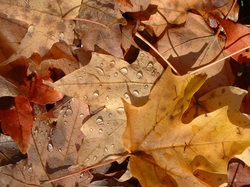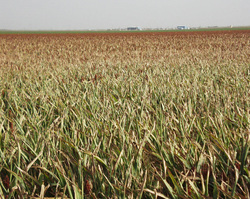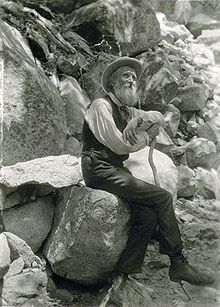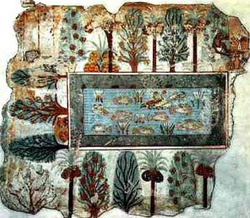|
Circa 1998 1) Prepare the soil. Remove plant debris - both crops and weeds from the garden and discard or compost. Fall tilling, except in erosion-prone areas, will improve soil structure and usually leads to faster soil-warming and drying in the spring, allowing crops to be started earlier. 2) Feed the lawn. Fertilize your turf now so the grass will look better over the winter months and will grow thicker tops and deeper roots in the spring. 3) Clean tools. Fill a bucket with coarse sand that's lightly moistened with motor oil and dip the metal ends of tools into it until they come clean, then wipe them with a dry cloth. 4) Make a map. Before all plants have died make a simple sketch showing where the plants are. This will help next year in rotating crops in a vegetable garden and for deciding where new plants will be planted. 5) Drain your hoses. Make sure that all outdoor pipes and spigots have been drained. 6) Store tubers. Dig up summer flowering bulbs, dry them thoroughly, and store them in a dark, cool, dry place. 7) Mulch. Mulch acts as a insulation, protecting plants' root systems. It also conserves soil moisture. Mulch should be applied no more than 3-4 inches deep. Pile mulch 3-6 inches away from tree trunks.
0 Comments
Circa 1998
This unusually dry season has transformed our lush green lawns into desert like, dusty plots. Never fear, grass knows when to go into a dormant state to help withstand these long, hot, dry periods. Your lawns are quite resilient. To survive this drought period the grass plant has exerted much of its stored energy. Now it is important to make available a late autum fertilization which is high in nitrogen. If available, nitrogen will be converted into usable sugars and oxygen through the photosynthesis process then stored within the root and crown system for the long winter. Not that the yard has been fortified with the needed fertilizers then we reccommend core aeration after the fall rains has softened up the ground. Aeration will help reinvigorate the root zone and eliminate soil compaction. He has been called " the father of our national parks." As an environmentalist pioneer, her was the first to speak out against adverse logging and farming practices. John Muir devoted his life to the study of the natural world and it was an incident in Indianapolis that led him to his destiny.
John Muir was born in Dunbar, Scotland in 1838. He was surrounded by the North Sea, the Lammer-Muir Hills, and the Firth of Forth ( the point where the Forth River meets the ocean). His first 11 years were spent observing the natural struggle between the sea and the mountains. In 1849 Muir came to America with his father. They settled in Wisconsin and the rest of the family joined them within the year. It was on the Muir Wisconsin farm that John developed an appreciation for nature. He became an avid reader and was considered to be a self-taught expert in botany and geology. As the Civil War began in 1862, Muir entered the University of Wisconsin. Two years later he moved to Canada where he spent time exploring and working in a sawmill. Circa 1998 From the ancient Egyptians' irrigation systems to modern suburban grassy lawns, gardens offer a historical timeline of cultures throughout the world spanning many centuries. The earliest written evidence of gardening is found in Egyptian tomb paintings from 2000 B.C. These pictures showed threes planted in straight rows along irrigation canals that fed small enclosed pools. Walled gardens existed throughout the Nile delta fed by canals that were joined to an irrigation system that encouraged farming. The ancient Persians of 1000 B.C are credited with the thought that the garden is the model of heaven. Their private paradises ( the word paradise comes from the Persian word pairidaeza meaning garden ) contained flowers, lush fruit trees, running water, and cool shade. It was during this time that King Nebuchadnezzar II built the Hanging Gardens of Babylon for his wife, Amytis. The gardens covered three acres of above ground terraces in downtown Babylon. Hollow pillars filled with soil supported tall trees, and water from the Euphrates was brought in by a sophisticated hydraulic system. This spectacular garden was named one of the Seven Wonders of the World.
|
AuthorsCurrent and former staff members have contributed to our newsletter over the years. Now the articles are available to view here on our blog Categories
All
|
© 2024 Ski Landscape Corporation - Website by Day Design





 RSS Feed
RSS Feed